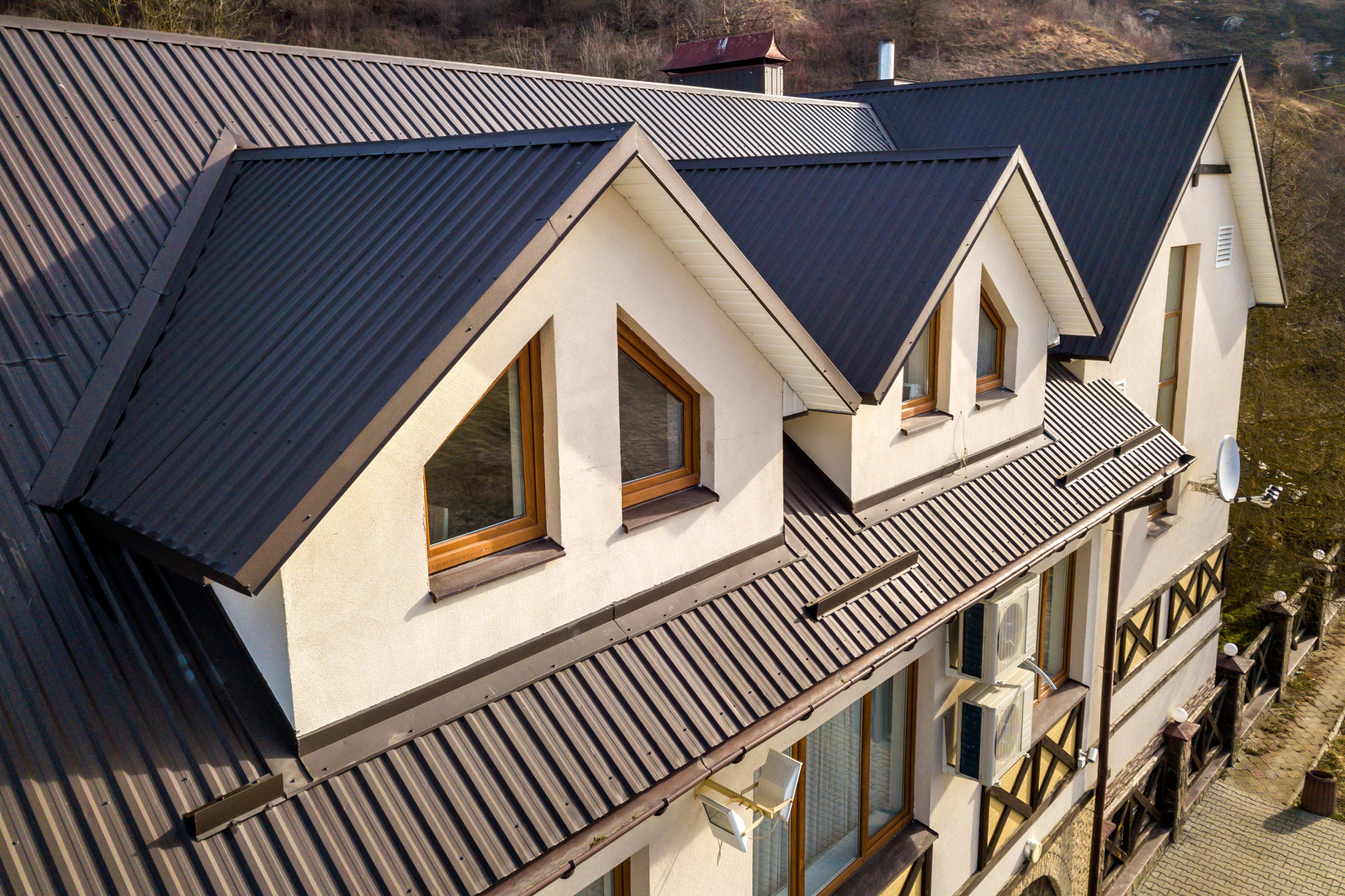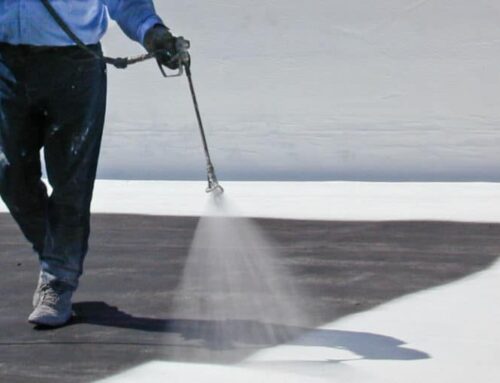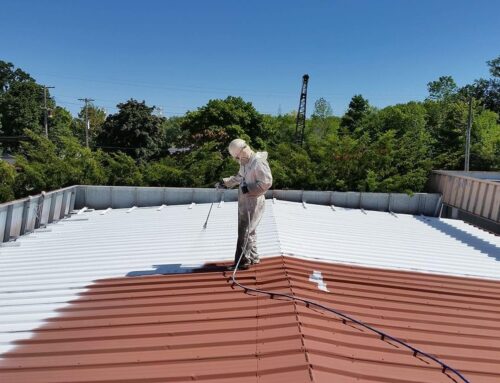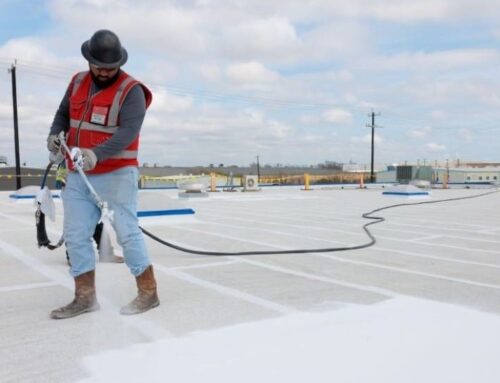Your pitched residential roof consists of more than just the metal, tile, or shingles covering the surface or the underlayment below. Where water drains from the roofs, commonly referred to as eaves, are more than just the end of a roof. Eaves consist of two main components — the soffits and the fascia — which create an end cap on the roof, keeping out moisture and pests while regulating airflow through your attic.
WHAT ARE EAVES?
Eaves refer to the section of the roof that extends beyond the exterior siding. Roof eaves serve two distinct purposes: to enhance your home’s look and protect the foundation and siding. Extending out, snow or rain that hits the roof falls further away from the house, decreasing the chance of water damage!
While some more modern designs tend to forgo house eaves, they are still relatively common in most homes today.
EAVES VS. SOFFIT
People often wonder if eaves and soffits are the same. The eave refers to the whole structure, including the soffit (the underside of the eave) and the fascia.
Eaves are structured differently, depending on the style of your home. The three most common types of house eaves are:
- Open House Eaves have an exposed underside and visible rafters
- Closed House Eaves include a soffit that hides the bottom of the eaves
- Box House Eaves enclose the soffit and add molding (usually ornamental).
Let’s dive deeper into the soffits and eaves, including what to look out for in each one.
WHAT ARE SOFFITS?
The soffit is the part of your roof that sits beneath the eaves. In other words, it’s the bottom of the roof where it is visible around the perimeter of your home. Typically, soffits are made from wood or aluminum.
Here are a couple of things you want to look out for when it comes to maintaining your soffits:
ROT
Rot can be a significant issue when it comes to a wooden soffit. Condensation can collect on the underside of the roof, leading to rot. Dry rot is also a possibility in desert climates, especially on the side of the home with the most direct sun exposure.
Rotten soffits can interrupt venting in the roof layers and provide access points for various unwanted pests. Rotten wood feels soft and gives easily when pressure is applied with a screwdriver or fingernail. Another tell-tale sign that moisture-driven rot is underway is blistering or peeling paint.
HOLES AND DAMAGE
Holes or cracks in the soffits are most common on wooden versions, but metal soffits may develop cracks if a seam separates. These openings can provide a handy nesting site for wasps or an entrance point for birds or other pests.
If the soffits are in otherwise good repair, expert roofing contractors can fill cracks and small holes with either wood filler or caulk. However, if your soffits have extensive damage or have begun rotting, your roofer may need to replace them entirely.
VENT ISSUES
The soffit vent is vital for proper air circulation in your attic, which helps keep your attic dry and your home comfortable. Cool air is pulled in through the soffit vents. It then passes through the attic beneath the roof. The heated air exits through roof vents at the ridge or close to the ridge of your roof.
Soffit vents can become blocked if birds pull out the screens and build nests in the openings. In this case, you – or a professional – must clear the debris to install the new vent screens. If your soffits don’t have vents, vent installation will help keep your attic cooler, which is always a plus.
WHAT IS FASCIA?
Fascia is the facing boards along the edge of your roof, the portion of the roof that faces outward. Fascia provides a mounting point for gutters while enclosing the roof. It also adds aesthetic value to your home. Like soffits, fascia can be made of wood or aluminum, although vinyl fascia is also common.
Here are a couple of issues to keep an eye on as part of your routine roofing maintenance:
GUTTER PROBLEMS
Typically, gutter mounts are affixed to the fascia. If the gutters are pulling from the building, damage may have occurred at the mounting site. You can typically patch wood and aluminum fascia if mounting hardware damage occurs, while vinyl may crack and require replacement.
We have seen quite a few problems arise with poorly aligned gutters and wood fascia. If rain overflows the gutters on the fascia side, prolonged exposure can lead to rot.
ROT
Much like soffits, wood fascia can experience dry rot or moisture rot. Paint helps prevent both types of rot, so make sure to repair any damaged paint as soon as possible. You can also have a weather seal applied to prevent moisture rot or a UV coating applied to counteract the effects of dry rot.
ANIMAL DAMAGE
Unfortunately, critters can easily damage soffits. Bird droppings can lead to stains or
corrosion. Rodents may decide to make your soffits their new home. And insects could burrow in, including the dreaded termites.
A professional roofing company can watch for troubling signs of issues during routine inspections.
KEEP YOUR HOUSE EAVES IN EXCELLENT CONDITION
As a homeowner or landlord, you already have a lot on your plate. Let our professionals take care of your roof! We are fully equipped to handle various roofing problems, including those listed above.





